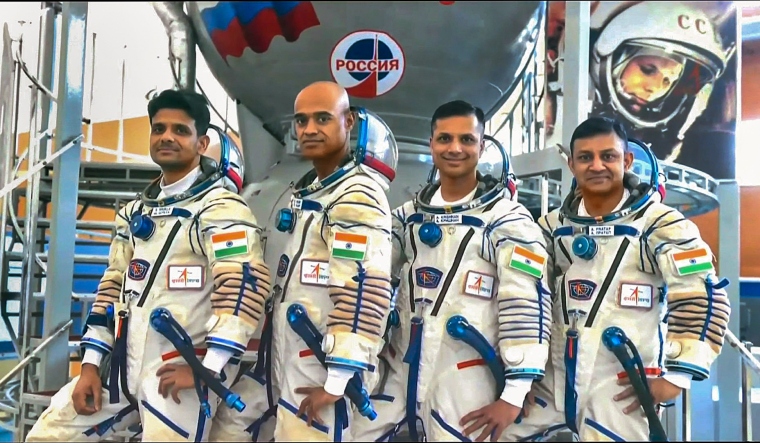The human spaceflight programme ‘Gaganyaan' led by the Indian Space Research Organisation (ISRO) aims to position India among the world’s top space-exploring nations. Should it succeed, India will be counted alongside the United States, Russia and China as countries with ongoing human spaceflight endeavors. ISRO plans to start unmanned test flights for the Gaganyaan mission later this year and conduct seven trial launches by March 2025.
Earlier, ISRO had identified two potential landing locations within Indian territorial waters—the Arabian Sea and the Bay of Bengal. Ultimately, the Arabian Sea was chosen as the landing site due to the turbulent conditions and the unpredictability associated with the Bay of Bengal, according to an official.
In case there is any deviation from the primary plan, even minor, the space agency has pinpointed 48 alternative sites in international waters for contingency purposes, according to officials. Senior officials involved in the mission have disclosed to the media that ISRO has earmarked 48 alternative sites globally for the potential splashdown of the Gaganyaan crew and module. This step has been taken to ensure that the astronauts can be returned safely and securely.
“Choosing various potential splashdown locations highlights ISRO’s comprehensive approach to risk management and meticulous planning. This strategy underlines the organization’s commitment to securing the safe re-entry of India’s inaugural astronauts on a homegrown space mission. The primary concern during any space mission is the safety of the crew members. By selecting multiple spots for splashdown, the mission organizers can choose the most favourable conditions—such as calm seas and minimal waves—to ensure a safe landing and recovery of the crew,” explained space expert Girish Linganna.
He further explains that by selecting multiple spots, including international waters, the Gaganyaan mission organizers are prepared for various scenarios and contingencies. In case of any unforeseen circumstances, such as technical failures, adverse weather conditions, or geopolitical issues, having alternative landing options provides flexibility and ensures the mission’s success.
A few experts point out that the Gaganyaan mission is India’s first human spaceflight programme and it is crucial to maintain good relations with other nations. By including international waters in the splashdown spots, India demonstrates a commitment to international cooperation and adherence to international norms and regulations for space activities.
“The selection of multiple splashdown spots allows the mission organizers to plan and execute recovery operations efficiently. By considering various factors such as proximity to naval bases, availability of recovery vessels and logistical support they can ensure a smooth recovery process for the crew and the spacecraft. Conducting a human spaceflight mission is a complex endeavour and each mission provides valuable learning experiences. By selecting multiple splashdown spots, the Gaganyaan mission organizers can gather additional data and insights that can contribute to future missions and advancements in space exploration,” added Linganna.
Earlier, ISRO had announced the selection of the first four astronauts for the Gaganyaan mission. These astronauts, who are test pilots from the Indian Air Force, will participate in the space mission, which is slated for launch by the end of next year. From the four astronaut currently undergoing training, three will be chosen for the ultimate mission.
In preparation for the mission, ISRO scientists have carried out numerous tests to verify the safety of all systems for carrying the astronauts to space and returning them safely to Earth. Additionally, ISRO has made modifications to its rockets and propulsion systems to adapt them for manned missions, marking a significant first in the agency’s 55-year history.
“For the Gaganyaan mission ISRO has modified its medium-lift, three-stage rocket, previously known as GSLV Mark-3, to comply with the standards required for human spaceflight. This upgraded version has been renamed ‘Human-Rated LVM3’, or HLVM3. This particular rocket has been utilized in ISRO’s notable missions, including the lunar explorations, Chandrayaan-2 and Chandrayaan-3, among others. Atop this upgraded rocket, a new orbital module has been designed, equipped with both a crew module, serving as the living quarters for the astronauts, and a service module,” remarked Linganna.
The comprehensive testing phase for this mission began in 2017 and is expected to extend over the coming months. These tests draw upon the space agency’s years of globally recognized expertise and experience. The mission is designed to conclude with the module landing exclusively in the Arabian Sea. The Indian authorities will be strategically positioned in this area to conduct the recovery of both the crew and the module.



